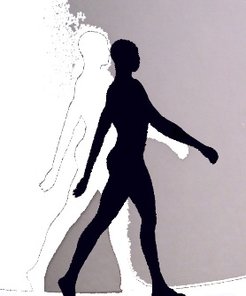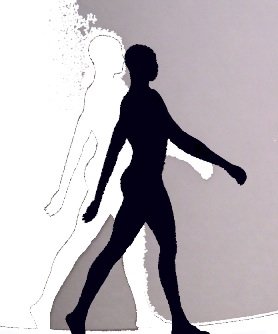Former Max Planck Research Group Body and Self

The human body: investigating its role in action, cognition and creating the sense of self
The research group aims at experimentally studying the constituents of the sense of agency and the sense of self in relation to the physical body. Our studies focus on the questions of how we perceive and represent our own body and the body of other persons, how this representation is implemented in the brain, and how we integrate sensory and motor signals that accompany or body movements to form a coherent mental representation of our body. Experimental methods include behavioural/psychophysical measurements and/or neuroscientific techniques (e.g., Transcranial Magnetic Stimulation, EEG, Functional Imaging).
Our ongoing projects investigate:
- self / other distinction with respect to actions and body parts
- sensorimotor integration and cognitive representation of one’s body
- neurocognitive principles of visual body processing.
Background:
“Everywhere in the world, self starts with body.“ (BAUMEISTER, 1999, p. 2, The self in social psychology, Psychology Press). According to this statement, our own body is not only an essential requirement for the daily interaction with the outside world, but is also included in the notion of self. In the literature there are a lot of different models from various fields of research on how the nature of the self can be described. The dominant view so far regarded the self as a purely mental entity. In recent history, however, many authors started grounding the concept of the self in the physical body, thus focussing on a “bodily self”. This approach perhaps comes also closer to our everyday concept of ourselves. We experience a basic sense of self by processing sensory and motor signals that accompany our body movements (DAMASIO, 1999, The feeling of what happens, Harcourt; GALLAGHER, 2000, Trends Cog Sci, 4, 14-21). These signals mediate the sensations that the body is indubitably mine (i.e., sense of body ownership) and that I am the author of the actions my body performs (i.e., sense of agency) (IBID.). Normally, we are rarely aware of these sensations. The bodily self rather seems to be an obvious and invariant phenomenon, which we are not used to reflecting upon. The body just seems to be there (JAMES, 1890; The Principles of Psychology, Harvard University Press) and provides a stable somatosensory background for subjective experience. We normally also take it for granted that our body builds an entity independent from other bodies and objects in the external world and we can easily differentiate our actions from the actions of others.
From a scientific point of view, however, the (bodily) self appears to be much more challenging. For example, the discovery of mirror neurons raises many questions regarding its nature: The properties of these neurons suggest that both self-generated and observed actions activate overlapping neural networks, thus implying a shared representation of self and other. Such a shared representation of actions and bodies raises a problem for the idea that the information provided by a “mirror system” can be used to construct a sense of self as distinct from others. It even argues against a self-specific representation of one’s own body and as a consequence, we should frequently make errors in assigning actions to the respective agent. Indeed, problems of agency attribution can occur in some pathological conditions but also in normal situations, in which, for example, the visual cues are ambiguous. Therefore, the question arise how do we know whether it is me or you given the idea that the brain represents others’ actions in the same way as it represents one’s own. A few models have been proposed on how the sense of agency and the sense of self are determined. These models either focusing on low-level brain processes or on high-level cognitive mechanisms but neither model have yet looked on the interrelation. Our work shall address this issue.
Moreover, our brain contains multiple, highly-distorted representations of the body which are stored in the primary sensorimotor areas (PENFIELD & RASMUSSEN, 1950, The cerebral cortex of man, Macmillan). These areas (i.e., the “body map”) show substantial structural reorganisations not only after brain injury, but also in gaining new sensorimotor abilities, such as playing an instrument. Neuroplastic changes in the primary body representation can occur even after very brief periods of time. Additionally, our different sensory modalities do also not always provide the same representation of our body. Nevertheless, most of the time, our phenomenological experience suggests a single, stable and coherent body. How does the brain construct this invariant model of our body from the primary neural representation? How do we generally learn the structure of our own body? We aim at studying the relationship between primary sensorimotor processes and experiences and the mental representation of one’s body.
